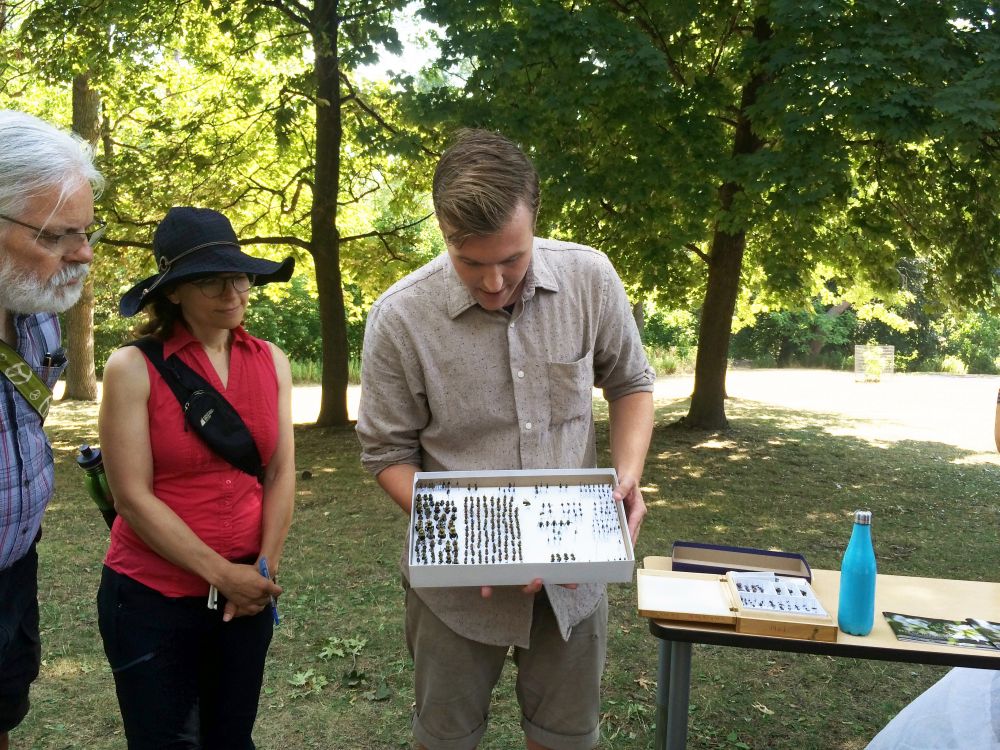
Dr. Scott MacIvor showing the group different types of bee species found in a study at Rouge Valley Park.
With over 364 bee species in the Toronto area, we had a lot to explore in High Park on Tuesday morning. We were joined by leaders from environmental, gardening, food and community groups such as the Ontario Horticultural Association, Not Far From The Tree and Park People.
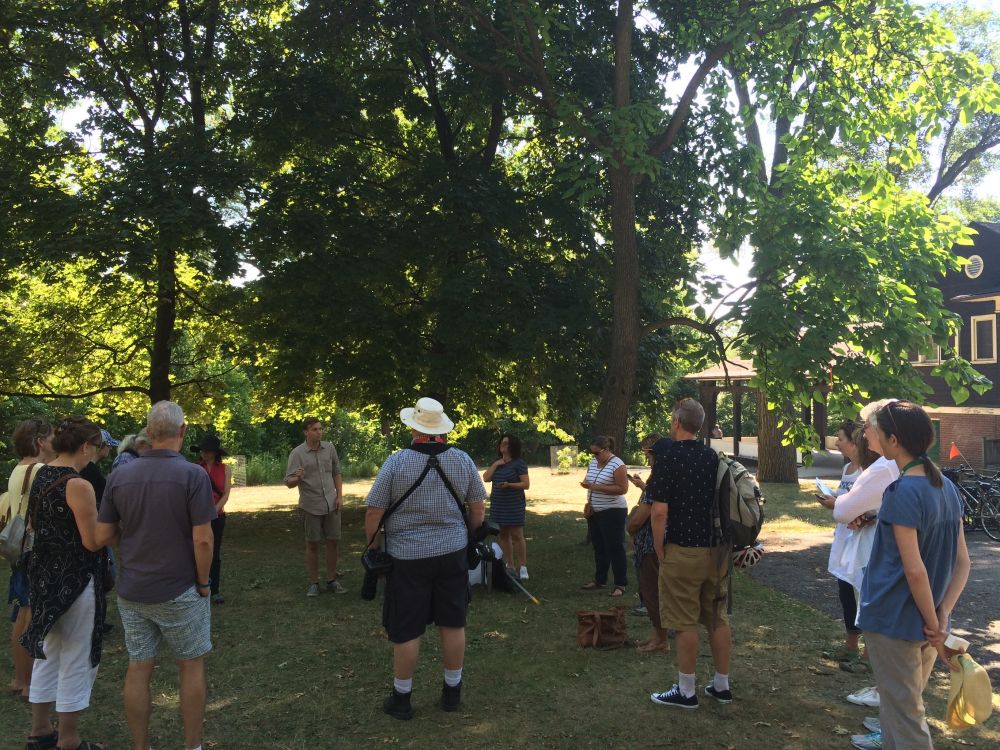
The group getting ready to head out and explore the bees of High Park.
You might be wondering why native bees? Or maybe even, what is a native bee? These are all good questions! A lot of people are familiar with the honey bee, a pollinating and honey producing bee species that came to North America from Europe hundreds of years ago. Native bees, on the other hand, are mostly solitary bees that can be found nesting in the ground. They especially love sandy ground that they can dig into.
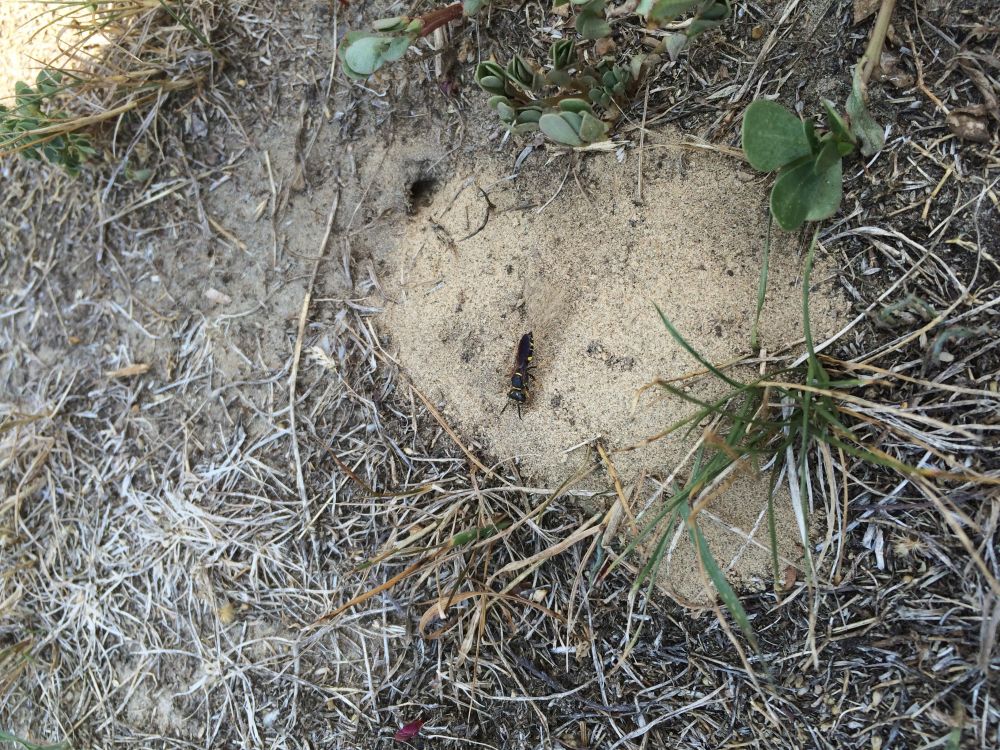
A Native bee exiting its nest in the ground.
The Let it Bee campaign, an initiative in partnership with LEAF, Friends of the Earth Canada and Ontario Power Generation to help save native bees, explains that while there are many people looking out for honeybees, there are few advocating for protection of native bees. Native bee populations are declining and at risk of future decline due to climate change, pesticides and spill-over pathogens from honey bees.

Dr. MacIvor catching some bees to show the group- don’t worry we set them free afterwards!
To help native bees, Dr. Scott MacIver explained that we need to create habitat that is conducive to bees and their needs. We can do so by planting lots of flowering plants to provide pollen for bees, leaving pieces of old, decaying or burnt wood in our yards for bees to nest in and leaving open, sunny spaces so bees can dig into the ground. He told us south-east facing spaces are best for bees because they love to warm up in the sun first thing in the morning!
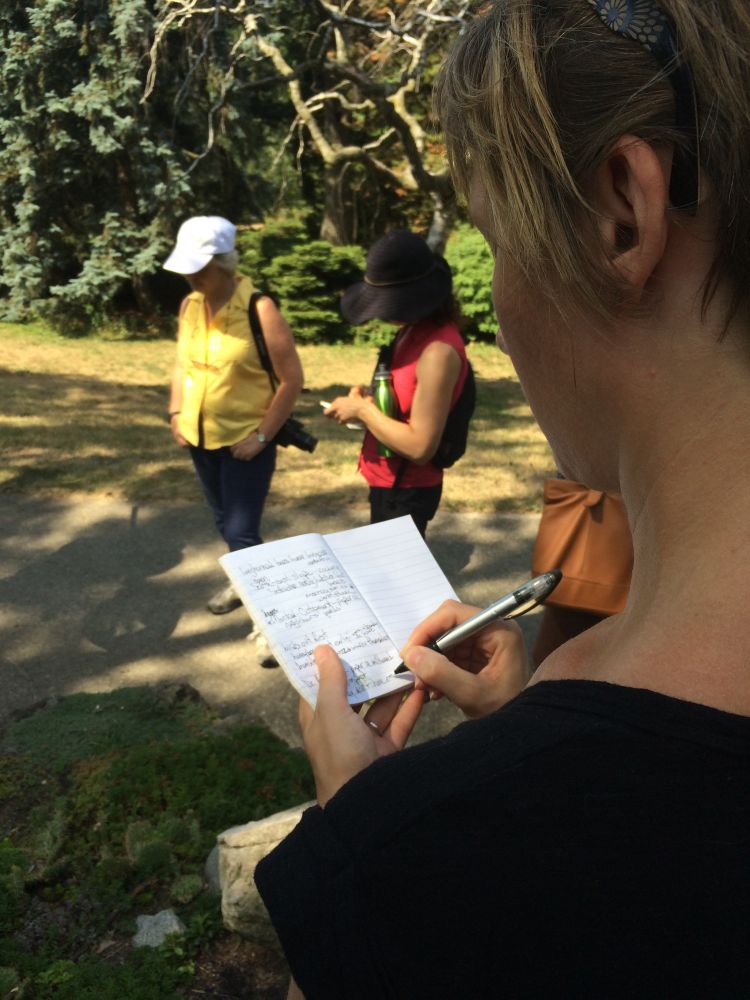
Melanie Kramer (Credit Valley Conservation) taking some notes!
He also explained that most solitary bees actually do not have stingers that are large enough to puncture human skin. So, next time you see a couple of ground bees, don’t be afraid of getting stung. Instead, take some time to observe them and all that they have to offer to us!
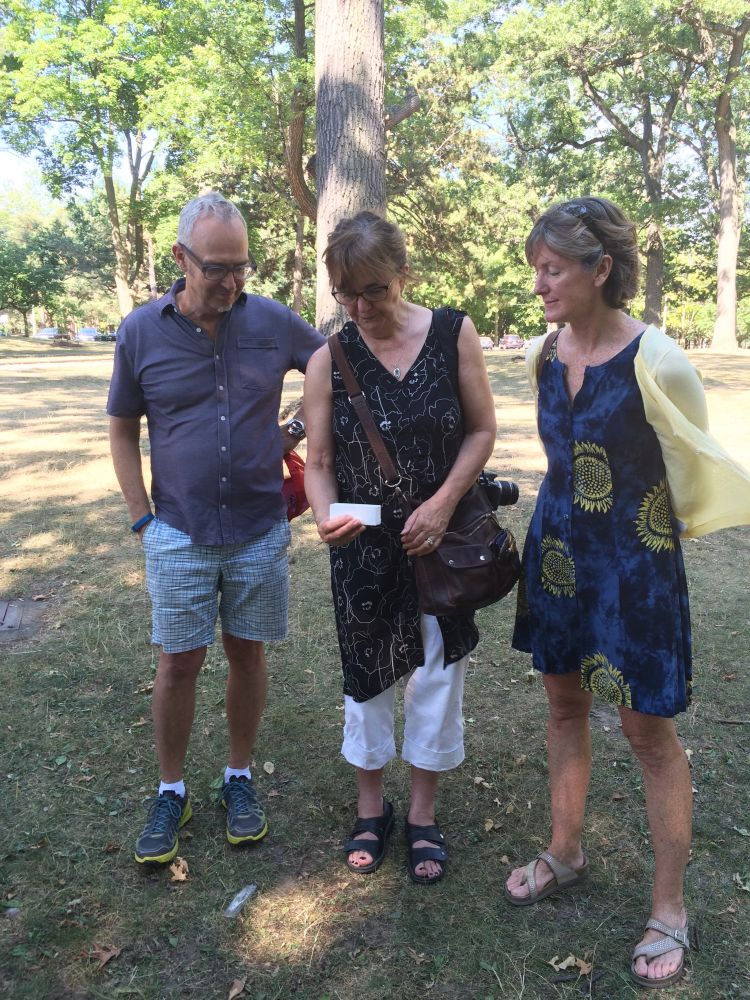
Garth Armour (Manager, Horticulture & Greenhouse Operation, City of Toronto), Jane Welsh (Project Manager, Environmental Planning, City of Toronto, and Vice-President, Ontario Association of Landscape Architects), Patricia Landry (Parks Programs Officer, City of Toronto)
A special thank you to Ontario Power Generation for helping to make this event possible and the High Park Nature Centre for making their facilities available to us. Another thank you to Dr. MacIvor for sharing his enthusiasm and knowledge! And a final thank you to everyone who came out and for all your efforts in helping to protect native bees. If you’d like more information or would like to sign the pledge to help save native bees, you can visit: www.letitbee.com
Emily Peden is Leaf’s Community Outreach Assistant.
Photos were taken by Emily Peden.
